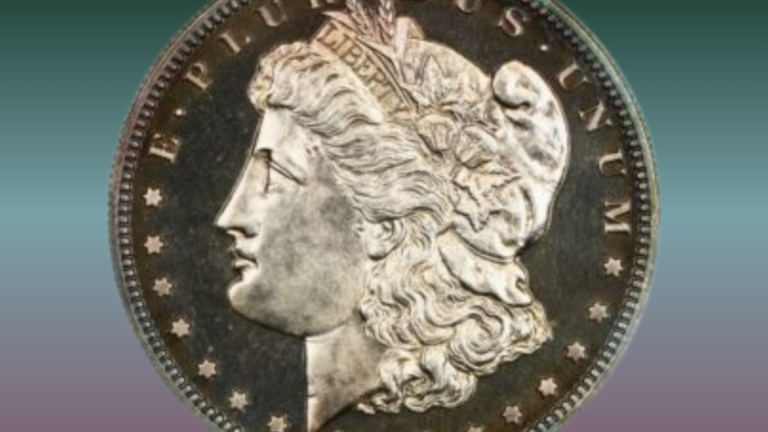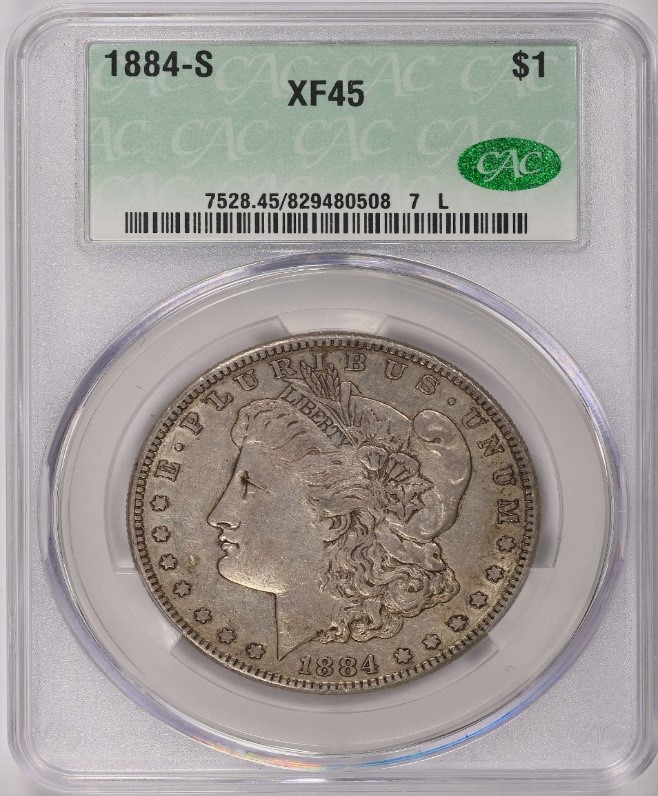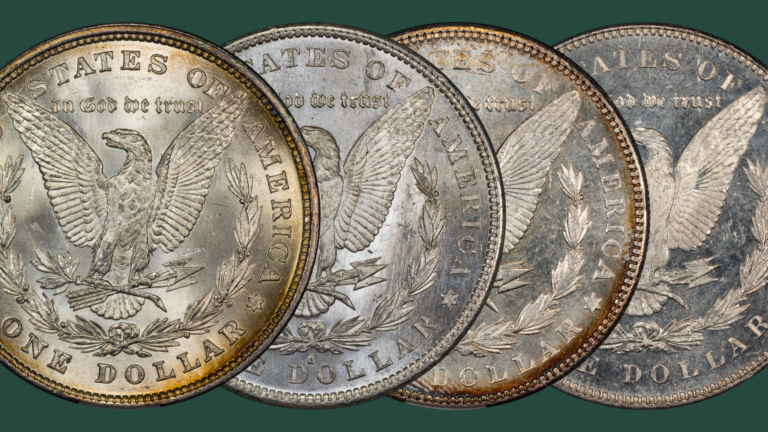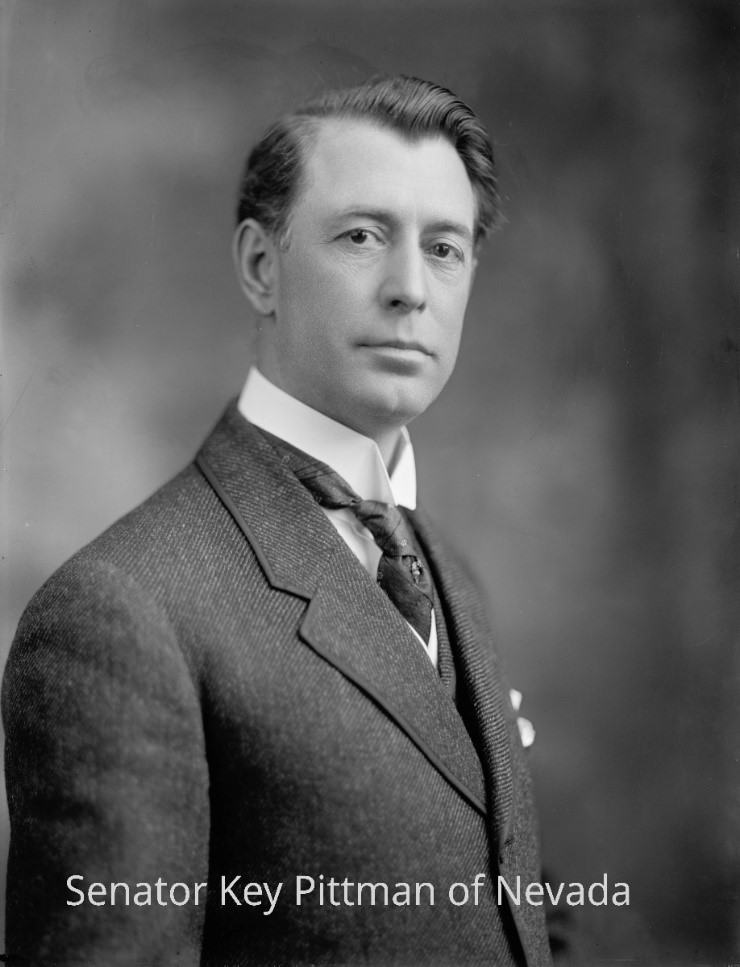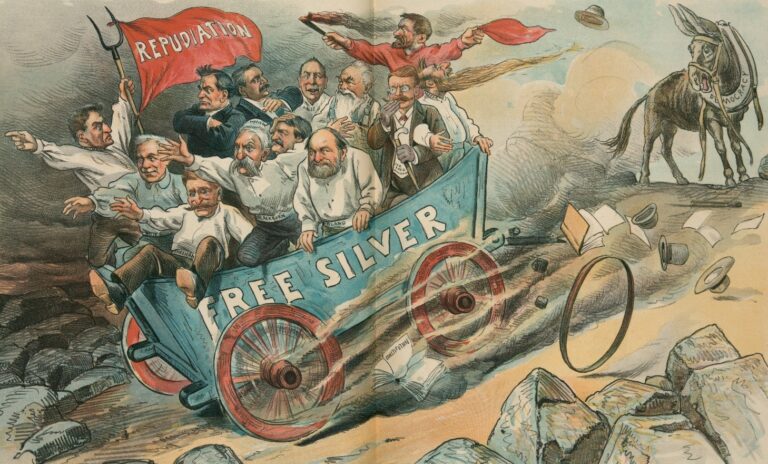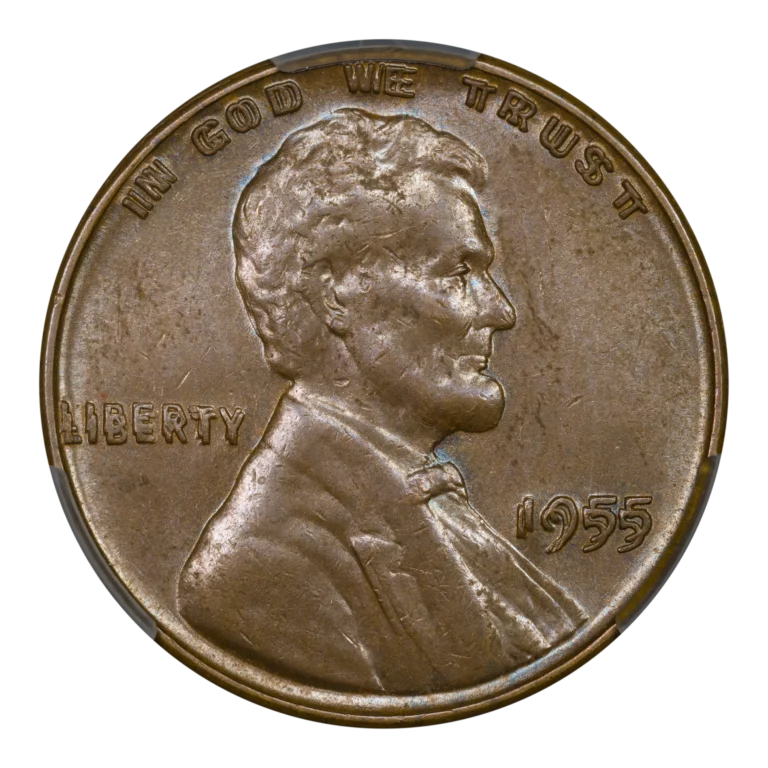by Greg Reynolds
A full type set of Choice Uncirculated (MS-63 to -64), pre-‘Civil War’ half dollars is difficult and very expensive. A really neat partial set, however, is not very costly. A collector who cannot afford a complete type set may enjoy collecting Liberty Seated or Reich Capped Bust halves ‘by date.’ This discussion, though, is a guide to assembling a complete type set of classic U.S. half dollars, an exciting task for sure. It can be done!
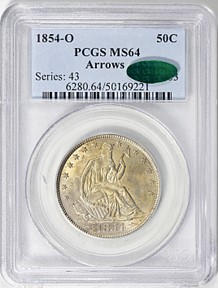
Type #9 – Liberty Seated, No Motto, With Arrows, No Rays (1854-55)
Like quarters, half dollars of 1853 had arrows on the obverse (front) and rays on the reverse (back). In 1854 and 1855, the rays were no longer there, but the arrows remained to keep reminding U.S. citizens that the silver content of most U.S. silver coins was reduced by the Coinage Act of 1853. Policymakers in Washington wished for consumers to spend silver coins rather than hoard them or seek to trade them for more than their respective face values.
Of the 1854-55 ‘With Arrows, No Rays’ type, the 1855-O is the least scarce in mint state grades. Just seven MS-63 grade and fourteen MS-64 grade 1855-O halves, however, had been approved by CAC by Sept. 18, 2021. Even fewer 1854-O half dollars had been CAC approved, four in the MS-63 range and twelve as MS-64. A very small number of these CAC approved 1854-O and 1855-O halves have appeared publicly over the past five years.
On Feb. 21, 2021, the firm of David Lawrence sold a CAC approved, PCGS graded MS-63 1854-O half for $1850. This is higher than the CPG-CAC estimated retail price of $1440. As of October 1, 2021, the CPG-CAC estimated retail value for a MS-64 grade 1854-O or 1855-O half is $2940. These CPG-CAC estimates are too low. True medium-retail levels are substantially higher.
Type #8 – Liberty Seated, Arrows & Rays (1853 only)
Zero CAC approved MS-63 to MS-64 1853 ‘Arrows & Rays’ halves publicly sold during the period from Sept. 1, 2019 to Oct. 1, 2021, as far as I know. More than a dozen corresponding non-CAC coins were publicly sold during this time period. A non-CAC, PCGS or NGC graded MS-63 1853 would probably retail for less than $3000 during late 2021 or early 2022. A non-CAC MS-64 grade 1853 could retail for a price anywhere from $3350 and $6000 depending upon the characteristics of the individual coin and the circumstances of the respective transaction.
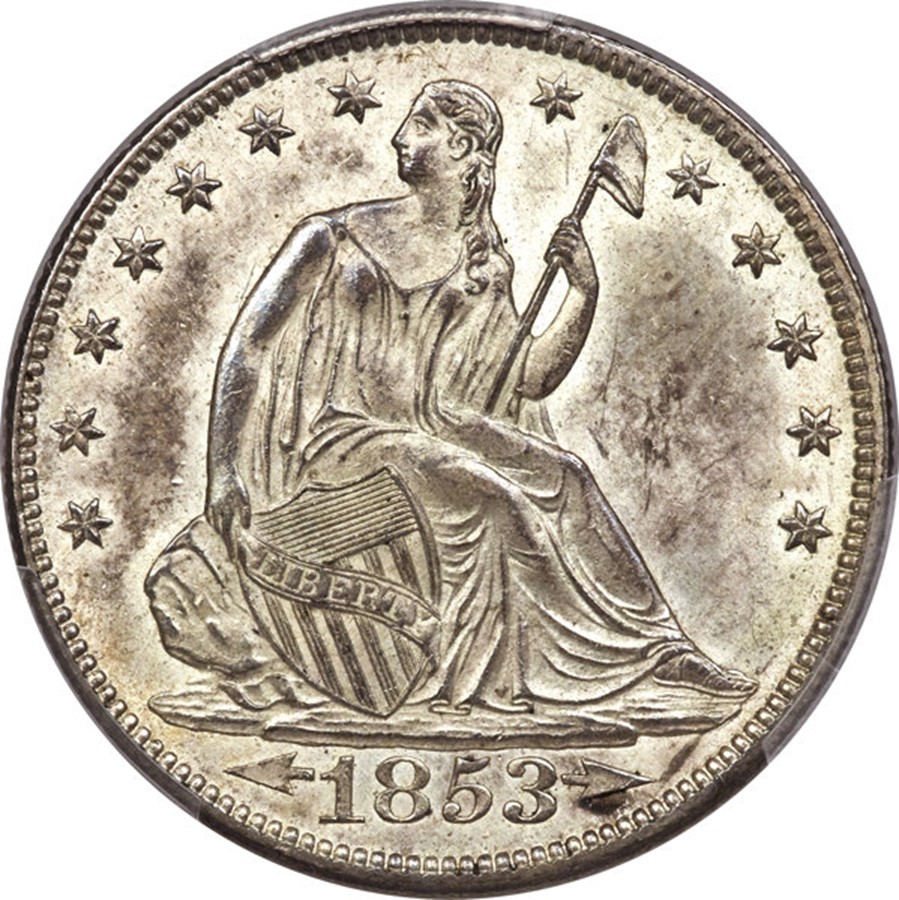
Generally, an 1853-O ‘Arrows & Rays’ half commands a premium over an 1853 Philadelphia Mint ‘Arrows & Rays’ half dollar of equivalent quality. In June 2020, Heritage sold a CAC approved MS-64 1853-O for $10,800. In July 2021, Gerry Fortin sold this exact same coin, with the same PCGS serial number, for $13,500. The market level for this coin may have increased in the interim.
On August 14, 2019, Heritage auctioned a PCGS graded MS-64+ 1853, with a CAC sticker for $6600. As experts at CAC ignore the plus aspect of plus grades assigned by PCGS or NGC, this coin is CAC approved as grading MS-64 not necessarily as MS-64+.
On June 9, 2019, GreatCollections sold a CAC approved MS-64 grade 1853 for $5803.89. On January 9, 2019, Heritage auctioned a CAC approved MS-63 grade 1853 for $3360.
It is probably a good idea to budget at least $3500 for a CAC approved MS-63 grade 1853 and at least $5000 for a CAC approved MS-64 1853. Although the CAC population report shows that twenty-seven 1853 halves have been CAC approved at the MS-64 level, I hypothesize that this total includes more than a few resubmissions of individual coins, probably with different PCGS or NGC serial numbers. A collector may have to wait months for a CAC approved MS-64 or MS-63 grade 1853 to become available.
Type #7 – Liberty Seated, With Drapery, No Motto (1839-53, 1856-66)
It is hard to find a really appealing MS-64 or even a MS-63 grade representative of this type. CAC approved MS-63 and -64 grade, ‘No Motto’ halves appear infrequently in public sales.
GreatCollections sold a CAC approved MS-63 grade 1859-O for $1932.70 on Sept. 5, and another for $1655.50 on Feb. 14, 2021. On July 28, 2021, Stack’s-Bowers sold a CAC approved MS-63 grade 1856-O half for $1080.
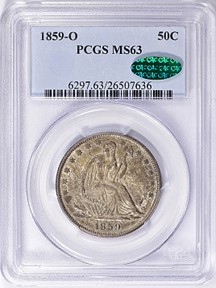
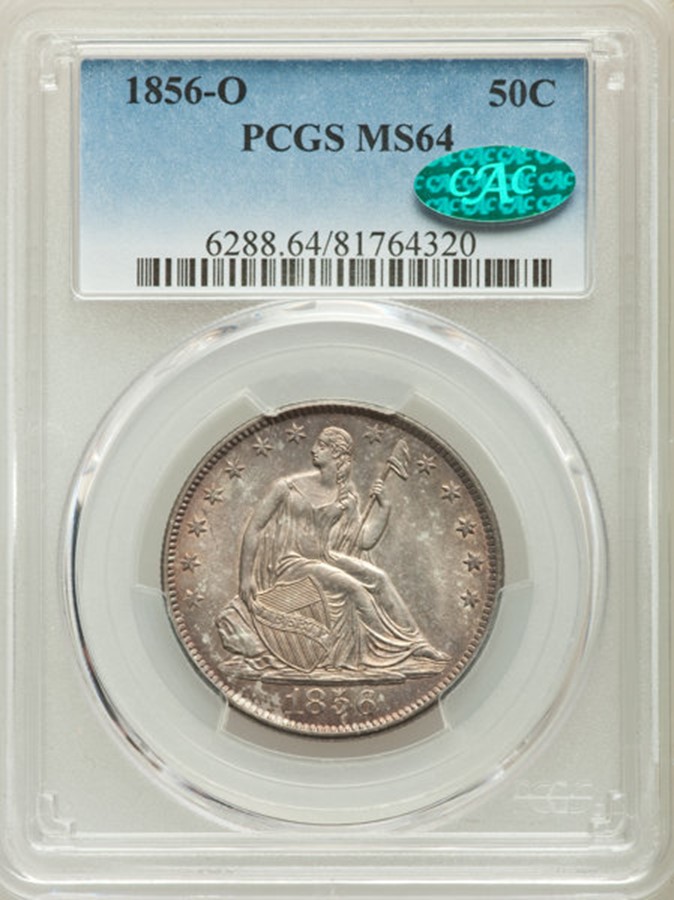
On Feb. 28, 2021, Heritage sold a CAC approved MS-64 grade 1858 for $2880. On Jan. 9, 2019, Heritage sold a CAC approved MS-64 grade 1856 for that same price, $2880. Back on Dec. 13, 2018, Heritage sold a CAC approved MS-64 grade 1856-O for $2100.
For most of the least scarce dates, the CPG-CAC retail estimates were $1380 for a MS-63 grade coin and $2380 for a MS-64 grade ‘No Motto’ Liberty Seated half dollar. As of Oct. 1, 2021, medium-retail prices for these are higher than the published CPG levels, in my estimation.
Type #6 – Liberty Seated, No Drapery, No Motto (1839 only)
It is often wondered whether the 1839 ‘No Motto’ Liberty Seated half really is a distinct design type. It is really very similar to the ‘With Drapery, No Motto’ type. Both fairly reflect Christian Gobrecht’s visions for the Liberty Seated design more so than Liberty Seated coins of other denominations.
The distinctions between ‘No Drapery’ and ‘With Drapery’ half dimes and dimes are much more substantial than the distinctions between ‘No Drapery’ and ‘With Drapery’ halves. It is customary, though, for an 1839 ‘No Drapery’ Liberty Seated half dollar to be classified as a separate design type.
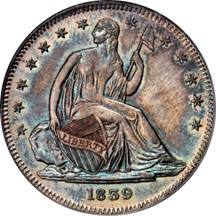
CAC has approved just three as MS-63, five as MS-64, and zero higher. If a collector is willing and ready to buy a non-CAC, certified MS-63 to MS-64 grade 1839 ‘No Drapery’ half, then I suggest hiring a consultant to examine the coins being considered. I have seen more than two that I contend have been doctored. There are others that have been upgraded after receiving lower PCGS or NGC grades in the past.
A non-CAC, PCGS or NGC graded MS-63 1839 ‘No Drapery’ half would probably retail for around $25,000 during the summer of 2021. On April 24, 2021, Heritage sold two non-CAC, certified MS-63 1839 ‘No Drapery’ half dollars, a PCGS graded coin for $21,000 and an NGC graded coin for $21,600. I saw them both and am not recommending either of them. The CAC approved MS-64 coin that Stack’s-Bowers auctioned in November 2019 was later upgraded and lost its CAC approval.
In April 2017, Heritage auctioned an NGC graded MS-64+ 1839 ‘No Drapery’ half, which was CAC approved at the MS-64 level, for $25,850. This was a very good deal. A retail price for this coin, then and now, would be much more than $25k!
Back in August 2013, Stack’s-Bowers auctioned a CAC approved, MS-63 grade 1839 ‘No Drapery’ half for $49,937.50, which I examined. This is an excellent coin. It shows no signs of having been cleaned or dipped. The natural toning is really neat and this coin is very attractive overall.

Type #5 – Gobrecht Capped Bust, ‘Reeded Edge’ (1836-39)
As I have now said in innumerable articles, there is much more to the distinctions between ‘Lettered Edge’ (1807-36) and ‘Reeded Edge’ (1836-39) halves than the edges. It is misleading to focus on the edges. The busts of Miss Liberty are by different artisans. The Gobrecht Capped Bust (1836-39) halves were produced with more technologically advanced equipment. The rims and striking characteristics are very different. There are significant additional differences.
The Gobrecht Capped Bust 1836-37 halves and 1838-39 halves are characterized by different representations of the denomination on the reverse, “50 CENTS” in 1836-37 and “HALF DOL.” on 1838-39 coins. It is debatable as to whether examples of both are required for a type set. In my opinion, just one is needed for a type set; the obverse is the same and this is not a tremendous difference.
It is also true that the specified fineness of silver for 1836 Gobrecht Capped Bust ‘Reeded Edge’ halves is different from that of half dollars dated 1837 and later. In January 1837, U.S. silver coins then in production were specified by law to be 90% silver, which is slightly higher than the approximately 89.24% (“1485/1664”) standard that was implemented for silver coinage in the Mint Act of 1792.
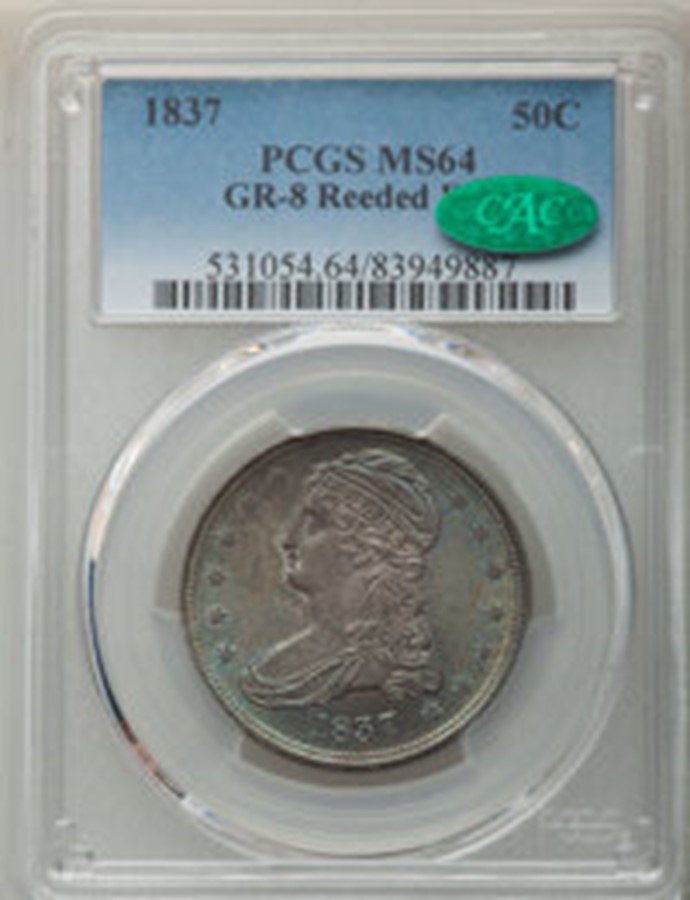
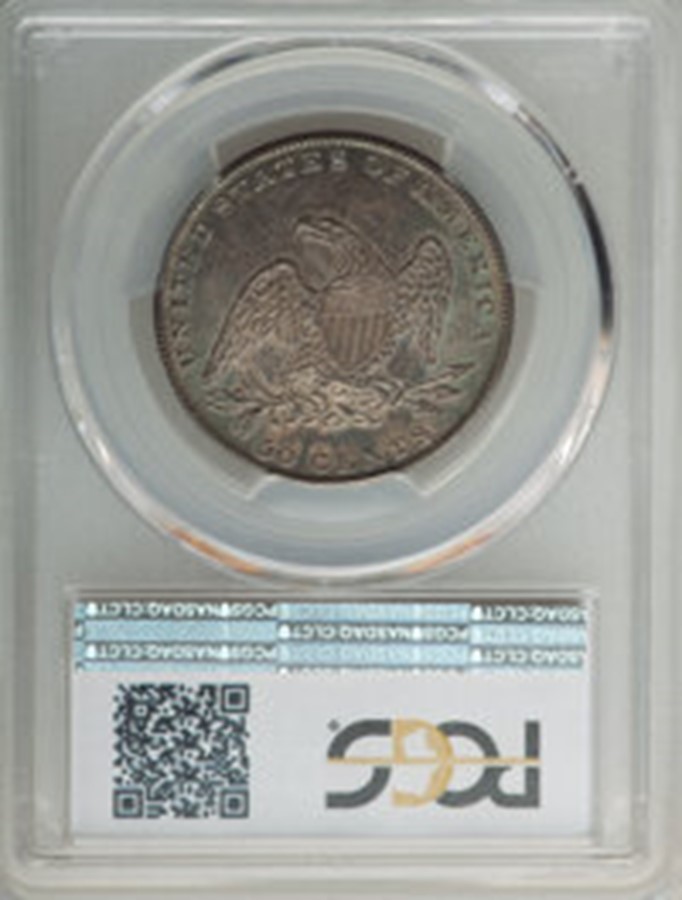
On August 17, 2021, Stack’s-Bowers auctioned a CAC approved, PCGS graded MS-64 1837 half for $8700, a very strong price. On August 20, Heritage auctioned a CAC approved, PCGS graded MS-64 1837 half for $5760. It might possibly be true that the just mentioned coin that brought $8700 is of notably higher quality than the coin that realized $5760 during the same week. There is a need to examine both coins in actuality to draw a conclusion. I did not see either of them.
CAC has approved fifteen 1838 halves at the MS-63 level and twenty grading MS-64. These probably amount to twenty-six to thirty-three different coins. I suggest seeking one. A CAC approved MS-63 grade 1838 could probably be found for less than $3250. It is difficult to estimate the market values for CAC approved MS-64 grade 1838 halves. Perhaps a fair retail range is from $5500 to $8,000, depending upon the characteristics of the individual coins.
Type #4 – Reich Capped Bust, ‘Lettered Edge’ (1807-36)
It is easy to find a CAC approved, MS-63 or -64 grade coin of this type. The 1826, 1829, 1831, 1832 ‘Small Letters’ and major varieties of 1834 halves may all be relatively low cost selections for type sets.
On June 20, Heritage auctioned a CAC approved, PCGS graded MS-63 1832 ‘Small Letters’ half for $2640. On August 11, Sheridan Downey sold a different CAC approved, PCGS graded MS-63 1832 ‘Small Letters’ half, also for $2640. On Aug. 22, 2021, Heritage auctioned a CAC approved, NGC graded MS-63 1834 ‘Small Date, Small Letters’ half for $1800.
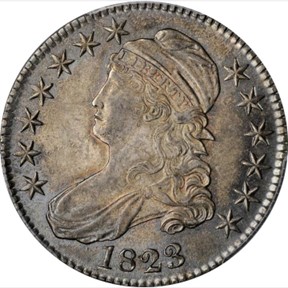
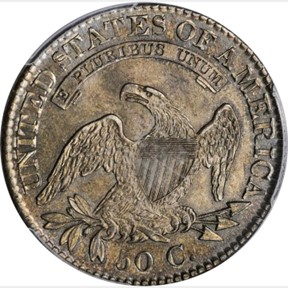
On March 26, 2021, Stack’s-Bowers auctioned a CAC approved MS-64 grade 1830 half for $4320 and a CAC approved MS-64 1834 half for $2880. On June 20, 2021, Heritage auctioned a CAC approved, PCGS graded MS-64 1831 for $4080.
Not one of the halves mentioned so far is of a die pairing that is very rare. Prices realized cited are intended to provide an idea of market realities for coins that are pertinent to this discussion. Individual coins are not being endorsed here. Ultimately, each collector must decide on specific coins that are best for him or her.
Type #3 – Draped Bust, Heraldic Eagle (1801-07)
As this design type is relatively scarce overall, it is pleasantly surprising that a significant number of MS-63 to MS-64 grade Draped Bust, Heraldic Eagle halves survive. A collector may practically figure that he or she will be able to find a CAC approved coin in this grade range for a sensible price. It may be necessary to wait more than a year.
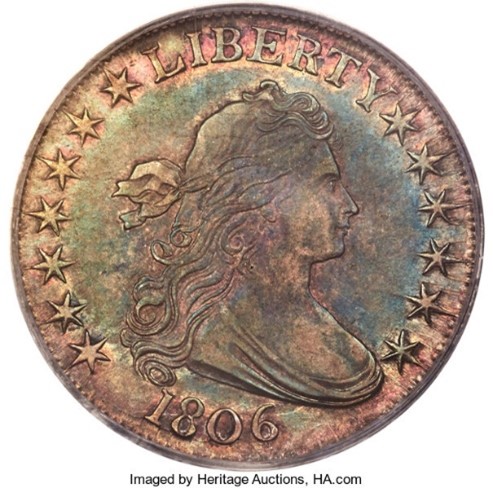
Heritage auctioned the same CAC approved, PCGS graded MS-63 1806 ‘Pointed 6’ half for $18,000 in January 2020 and for $17,400 in August 2020. On October 18, 2020, GreatCollections sold a PCGS graded MS-63+ 1807 Draped Bust half, which was CAC approved at the MS-63 level, for $21,670.
Alternatively, a collector could hire a consultant and consider non-CAC Draped Bust, Heraldic Eagle halves. In regard to coins that I have personally examined, a relatively large percentage of the non-CAC coins of this particular design type have glaring imperfections, often including deliberate modifications. While I am not thrilled by every single CAC approved half dollar of this design type, they are, on average, much more appealing to me than non-CAC, Draped Bust, Heraldic Eagle half dollars, which I have seen.

Show off Your Collection in the CAC Registry!
Have CAC coins of your own? If so, check out the CAC Registry–the free online platform to track your coin inventory, showcase your coins by building public sets, and compete with like-minded collectors!
Type #2 – Draped Bust, Small Eagle (1796-97)
A PCGS or NGC graded MS-63 to MS-64 coin of this type is likely to retail for at least $350,000 and probably not more than $525,000 during late 2021 or early 2022. Market values may be notably different later in 2022 or in 2023.
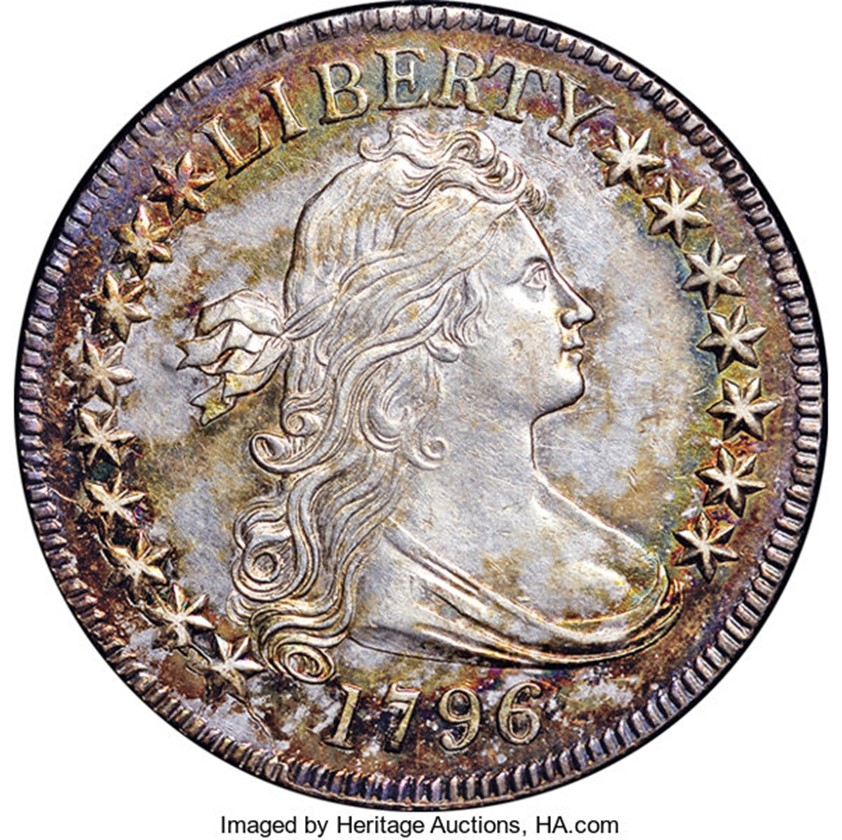
A collector should not count on being able to acquire a CAC approved, uncirculated 1796 or 1797 half dollar. Among all 1796 and 1797 half dollars that have been submitted to CAC, only one has been approved at the MS-63 level. A 1796 half in the Eric Newman Collection was NGC graded as MS-63 and CAC approved. In November 2013, it was auctioned for $470,000.
CAC has not approved a 1797 half as MS-63 and has approved one 1797 half as MS-64. There are two 1797 halves that are CAC approved as grading above MS-64, both of which I have publicly discussed on multiple occasions, the Norweb and Rogers-Pogue 1797 halves. These each have values well into the seven figures.
The only 1797 half that has been CAC approved as MS-63 or MS-64 is the ‘Byron Reed Collection’ 1797, which was PCGS graded MS-64. In June 2015, Heritage auctioned it for $493,500.
A collector seeking a MS-63 to -64 grade coin of this type could wait for one of the two CAC approved coins to become available. Alternatively, a collector could hire a consultant to explain the positive and negative aspects of non-CAC, PCGS or NGC graded coins that become or may become available.
In regard to very expensive coins, it is important for collectors to learn about the positive and the negative aspects of individual coins before making their own decisions. A pertinent expert dealer who refers only to the positive aspects of coins is not providing sufficient information for a prospective buyer to make a sound decision. Vintage coins, especially those struck with a screw press, are complicated and fascinating historical relics.
Type #1 – Flowing Hair (1794-95)
As uncirculated 1794 halves are extremely rare and extremely expensive, these are not often selected for type sets. Although uncirculated 1795 halves are not nearly as rare as 1794 halves, they must be rarer than PCGS population and NGC census reports indicate. Indeed, I am nearly certain that the reported totals include a substantial number of multiple counts of some of the same coins.
As of July 9, 2021, PCGS reports eight 1795 half dollars as grading MS-63, three as MS-63+, five as MS-64 and one as MS-64+. NGC reports eleven in the MS-63 range, including at least two as MS-63+. In addition, NGC lists seven in the MS-64 range, including at least one as MS-64+. CAC reports two as MS-63 and three as MS-64.
The five reported by CAC, if these are five different MS-63 to MS-64 grade 1795 halves, have not been publicly seen in years. A collector seeking a Choice Uncirculated 1795 half should consult an expert.
Also, it is apparent that research should be done to formulate a list, with pedigrees, of the dozen best 1795 half dollars. Condition rankings and ownership histories of these are mysteries.
A collector assembling a type set should not rush to acquire a MS-63 or higher grade 1795 half dollar. It is important for possible acquisitions to be researched or at least very carefully considered. A collector who does not have the resources or the patience to assemble a complete type set of Choice Uncirculated half dollars may wish to assemble a type set of 19th century issues. A type set of Choice Uncirculated 19th century halves would be a challenging, though very realistic project.
Images are copyrighted by Heritage Auctions, Great Collections, and Stack’s Bowers.
Copyright © 2021 Greg Reynolds
About the Author
Greg is a professional numismatist and researcher, having written more than 775 articles published in ten different publications relating to coins, patterns, and medals. He has won awards for analyses, interpretation of rarity, historical research, and critiques. In 2002 and again in 2023, Reynolds was the sole winner of the Numismatic Literary Guild (NLG) award for “Best All-Around Portfolio”.
Greg has carefully examined thousands of truly rare and conditionally rare classic U.S. coins, including a majority of the most famous rarities. He is also an expert in British coins. He is available for private consultations.
Email: Insightful10@gmail.com
